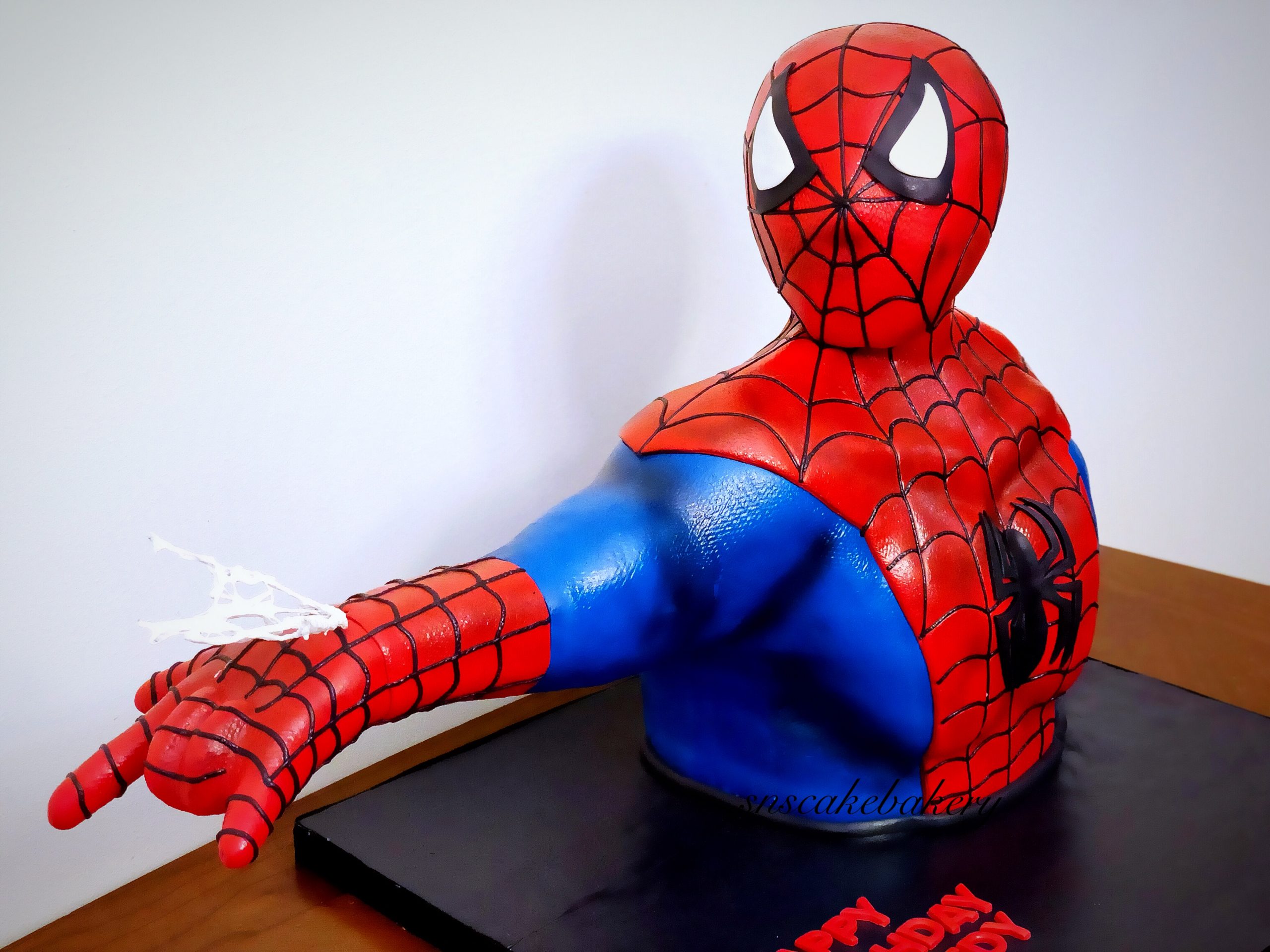Let me share my journey in making this 3d Spider-Man cake with you. It wasn’t a piece of cake, but it’s also not an overnight project. When I first saw this cake, I thought, “Can I really do this?” However, after breaking it down into steps, I managed to get it done. I must say, blogs and video tutorials are incredibly helpful when you’re unsure about making a cake or anything else, for that matter.
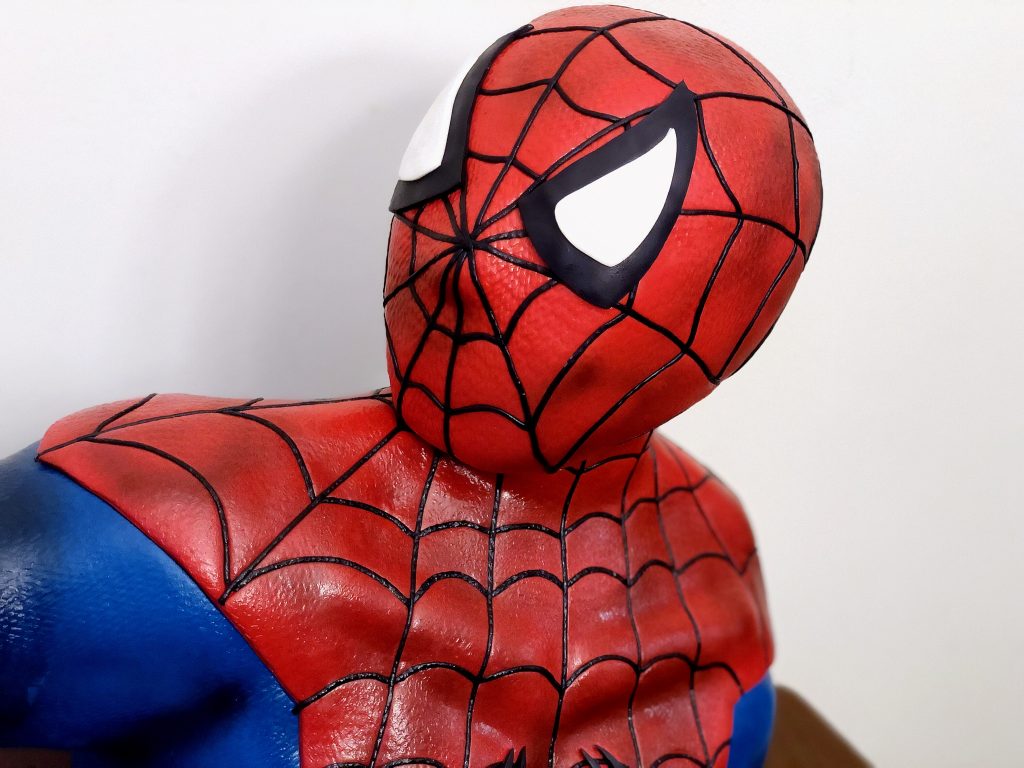
I discovered lots of useful tools and tutorials that made it possible for me to create this cake without too much trouble. Making this cake will surely challenge you and take you beyond your comfort zone since it’s quite different from working with a regular round or square cake.
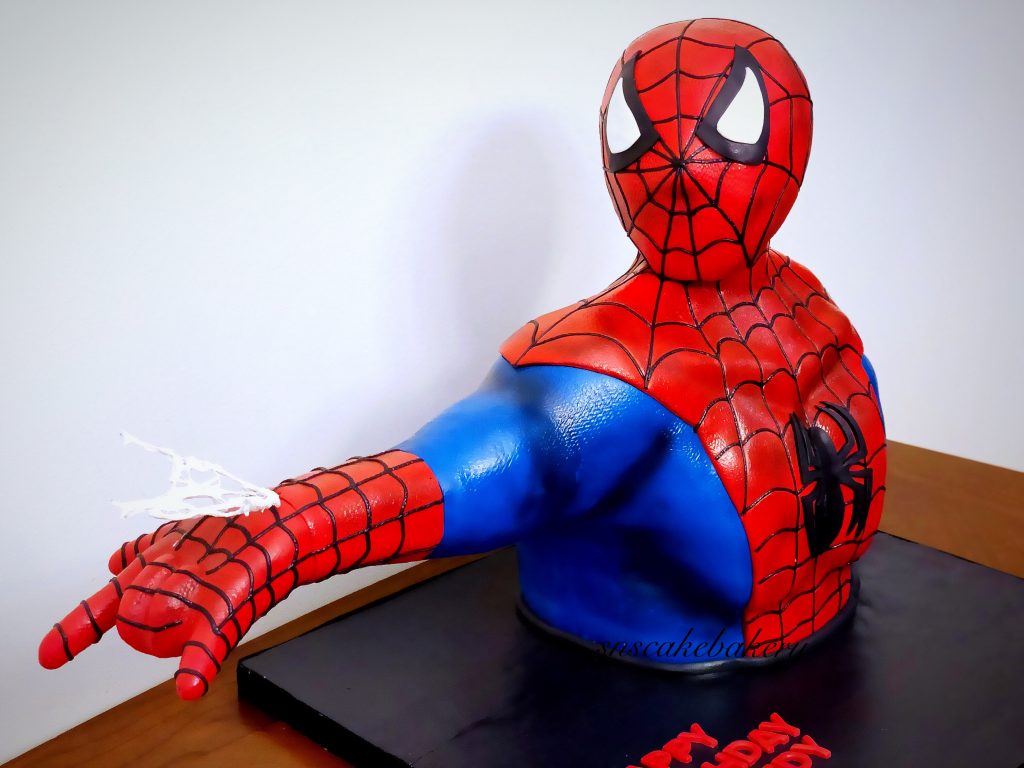
However, this tutorial will guide you through the process, helping you avoid the problems I encountered. It serves as your comprehensive resource for successfully creating this Spider-Man bodice cake.
Like any project, start by gathering all the materials you’ll need for making this cake, which can serve up to 40 people.
Tools Needed:
Hardware (for frame)
- 1 drill
- 1 drill bit
- 4 screws
Cake Frame & Board:
- 1 and 1/2 inch thick wooden board (cut 18×20 inched)
- 2 pvc pipe
- 1 pvc cross
- 1 45 degree pvc elbow
- PVC Pipe cutter
- 1 flange
- 2 male and female pipe attachments
- Fancy foil
- Glue stick
Template:
- 1 large drawing of Spiderman
Ingredients:
- 2 Large bowls of Rice Krispy Treat
- 6 layers of cake
- Buttercream
- Ganache
- 4 balls of fondant (2 red and 2 blue)
- 2 balls of black Fondant (mainly to cover cake board)
- 1 ball of white fondant
Key Note: Ensure that you clean all PVC pipes thoroughly and wrap them with plastic wrap. After wrapping them, use a heat gun on a low setting to gently melt the plastic wrap onto the PVC pipes. Be cautious not to overheat the plastic wrap, as it can burn if not handled carefully.
Remember to complete this step before attaching the cake to the PVC pipe.
To create the template for the 3D Spider-Man bodice cake, I utilized my iPad Pro to draw the shape. I chose this approach to ensure the accuracy of the shape.
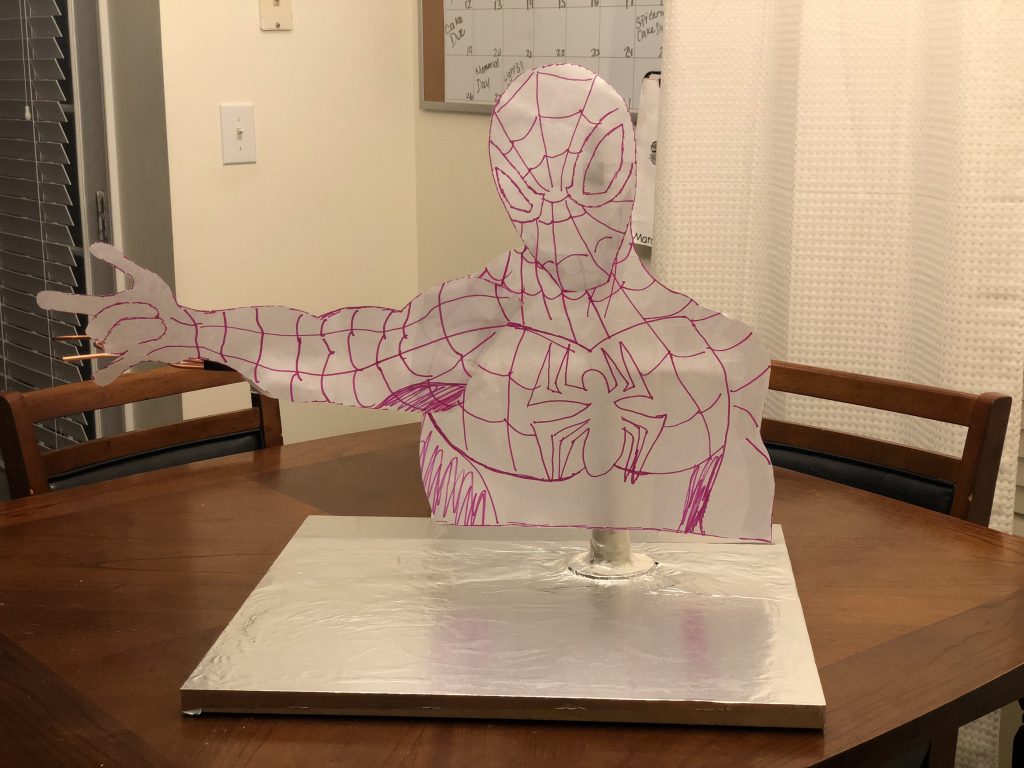
To ensure the cake fits on the board and properly place the flange on the wooden cake board, I used my iPad Pro to draw the shape as a guide.
Step 2: Measuring the PVC Pipe
After using the template to determine where to position the flange on the wooden cake board, I marked four dots in each flange hole with an edible marker, helping me remember where to place the flange if I need to move it later.
Then, I made a cross shape with the PVC pipe, extending one side further. I attached the template to the PVC pipe with double-sided tape to guide where I should cut the pipe. I made cuts at the elbow and in the middle of the head in the template. This will make it easier to attach the hand and head to the cake.
Step 3: Attaching the Flange and PVC to the Wooden Board
I placed the flange in the middle of the cake board, near the right edge. The arm extends beyond the board, but positioning the flange on the right side ensures only the hand and part of the forearm hang off the cake board. This keeps the heaviest part, like the torso, on the board to prevent the cake from tipping.
After marking holes on the board, I created small dents using a drill attachment. Be careful not to drill through the board completely, as this would prevent it from securing the PVC pipe. Finally, I inserted screws into each hole to attach the flange to the wooden board.
Step 4: Setting Up the Cake Structure
With the flange securely attached to the cake board, it’s time to set up the cake structure. The arm’s PVC pipe was cut to 16 inches, while the pole connected to the flange was cut to 10 inches, with 6 inches for the lower half of the PVC cross and 4 inches for the upper half, where the head will rest on the cake. These measurements are based on serving 40 people, so adjust them according to your serving size.
In this step, level the cake layers just as you would with any regular cake. This ensures the cake maintains a flat and sturdy structure. Once the cake is leveled, cut the layer in half and position it around the PVC pipe.
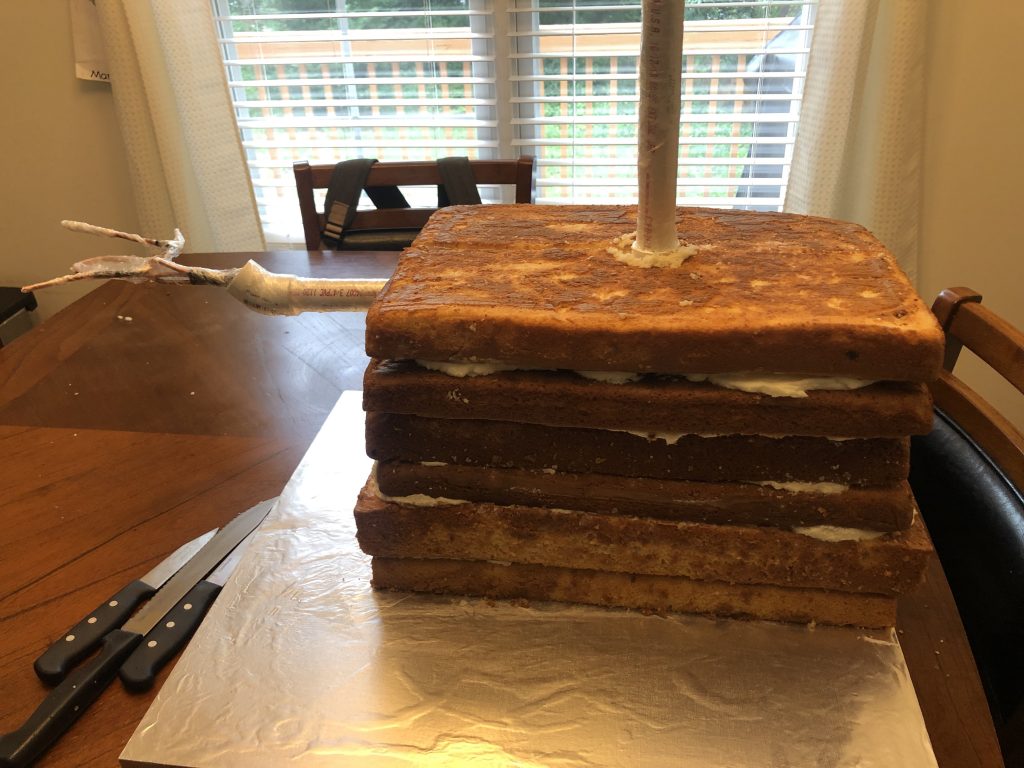
Press the cake against the PVC pipe to mark where you need to cut out a circle in each layer, allowing it to fit snugly around the PVC pipe. After cutting the circle in the first layer, repeat the process for the remaining cake layers. Once all the holes are cut, you can start filling and stacking the cake.
To reassemble the layers that were cut in half, apply a small amount of buttercream to one side of the cake and press both sides together around the PVC pipe.
Step 6: Shaping the Cake:
Now, the template comes in handy. Position the drawing next to the cake to use as a guide for carving. This will help you achieve the desired shape for your Spider-Man bodice cake.
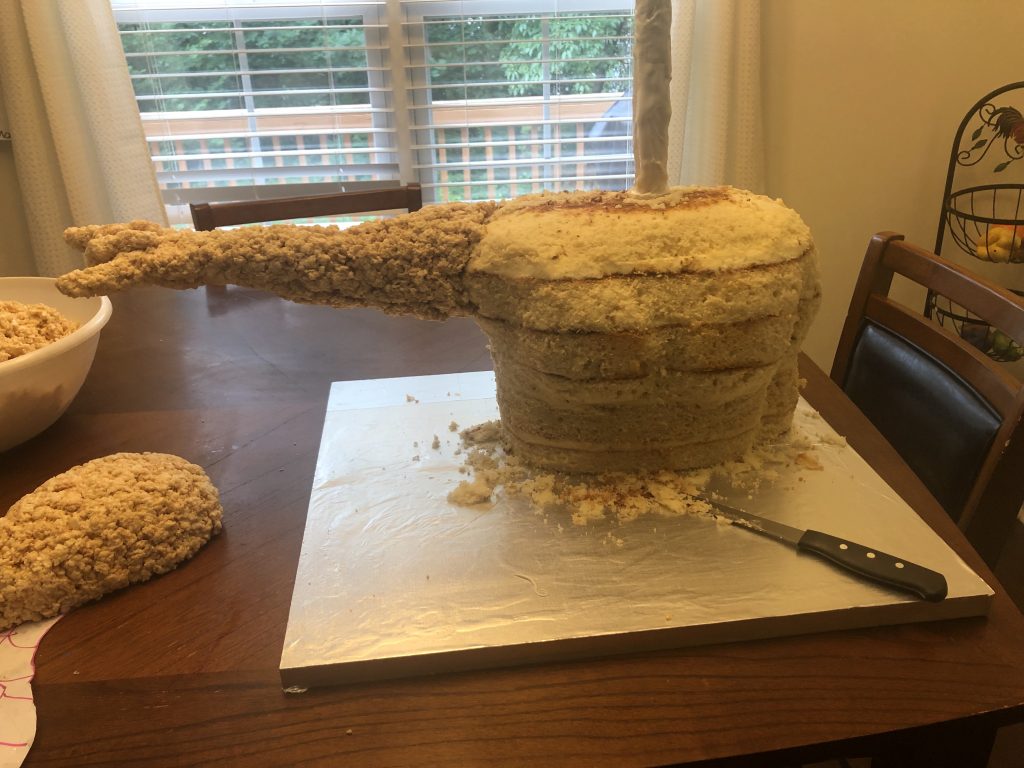
Once you’ve used the template to carve the cake, it’s time to refine the details and make it look more realistic. Spider-Man isn’t overly muscular, so creating a moderate shape for the chest, triceps, and neckline will do the trick.
Step 7: Adding Rice Krispies:
To make the Rice Krispies stick to the PVC pipe, you can apply melted marshmallows to the outside of the pole. This will help the Rice Krispies adhere and stay in place.
Start by adding Rice Krispies to the arm of the PVC pipe until it reaches the same thickness as indicated by the template. For Spider-Man’s head, shape a ball out of Rice Krispies. Place it next to the template to determine the appropriate head size, ensuring it’s proportionate. We don’t want Spider-Man with an oversized head and a tiny torso, right?
After shaping the head, position it on the PVC pipe to figure out how to carve it. You’ll also need to carve the arm. This ensures a smooth surface for the fondant and prevents any lumps from showing through.

Now that you’ve carved the cake to your desired shape, it’s time to give it a smooth outer layer using ganache. The ganache will create a sturdy surface and ensure there are no bumps under the fondant. After applying ganache to the cake and head, refrigerate them for 30 minutes to 1 hour until they firm up.
Step 8: Covering the Cake with Fondant:
Before you apply fondant, add a bit of shortening to the ganache. This helps the fondant stick properly. When covering the cake with fondant, begin with the color blue for both the arms and torso. Roll out a large piece of blue fondant and place it horizontally on the cake, stretching from one arm to the other.
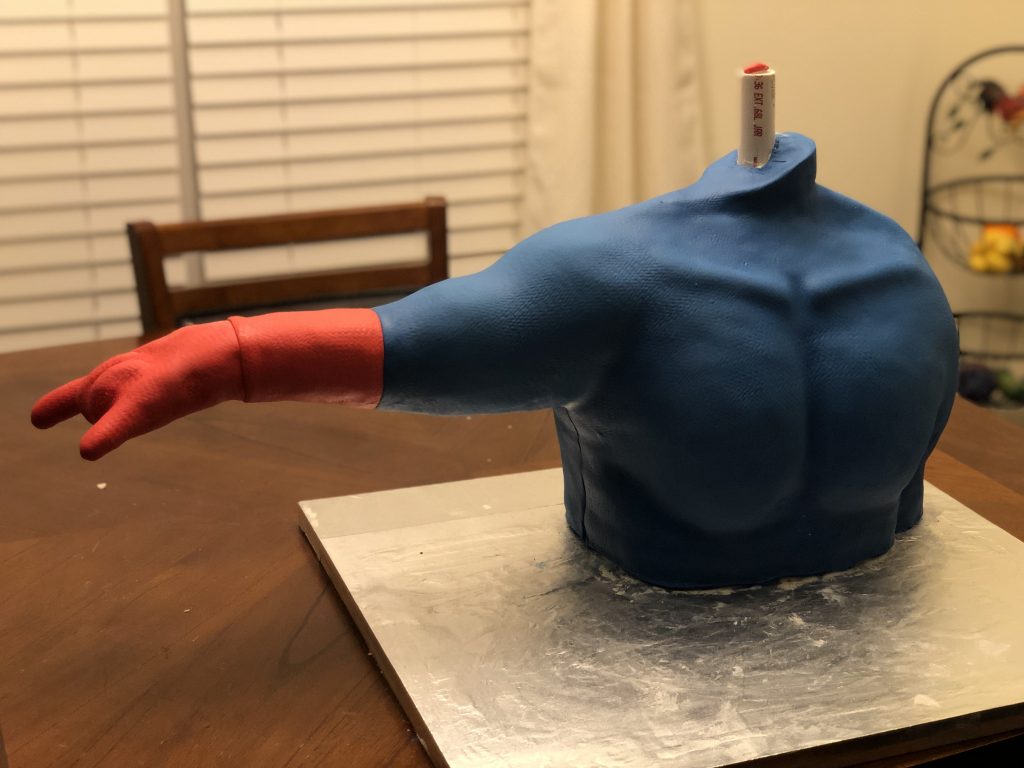
Once you’ve applied the blue fondant to the cake, it’s time to cover the head, hand, and forearm with red fondant. Cover the head separately with red fondant, and once it’s done, position it on the PVC to add the web design and eyes.
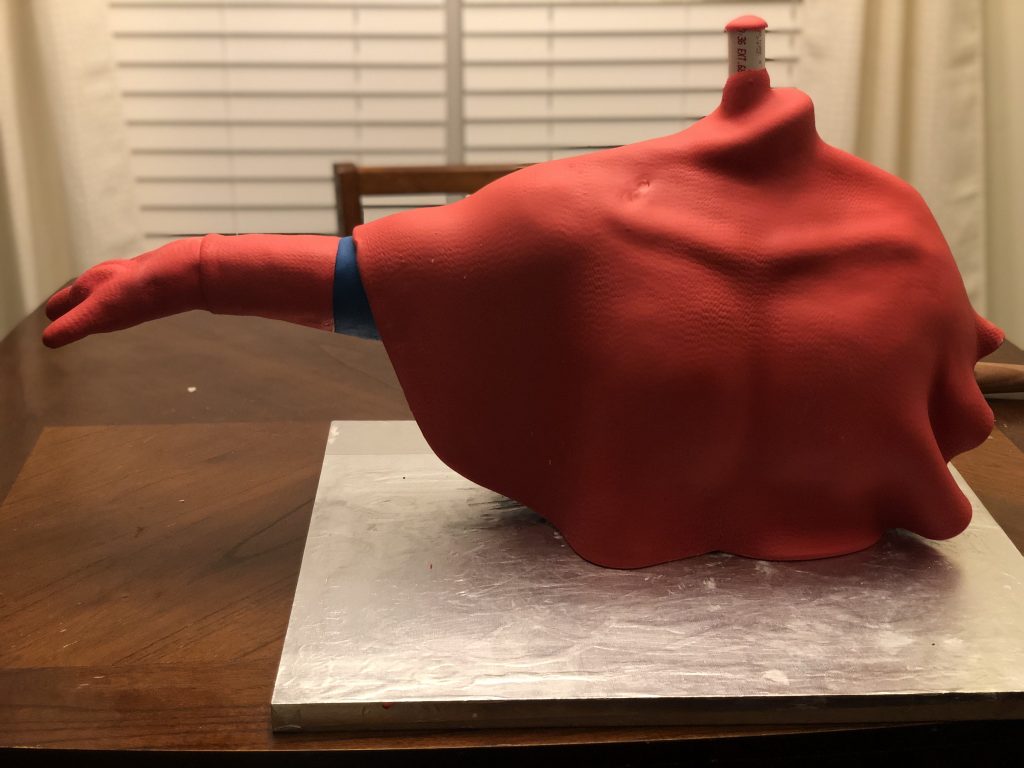
Now, for the finishing touches:
In this part of the tutorial, add the eyes, web design (to the red portion of the cake), and the spider logo (on the front and back) as the final details for your Spider-Man bodice cake.
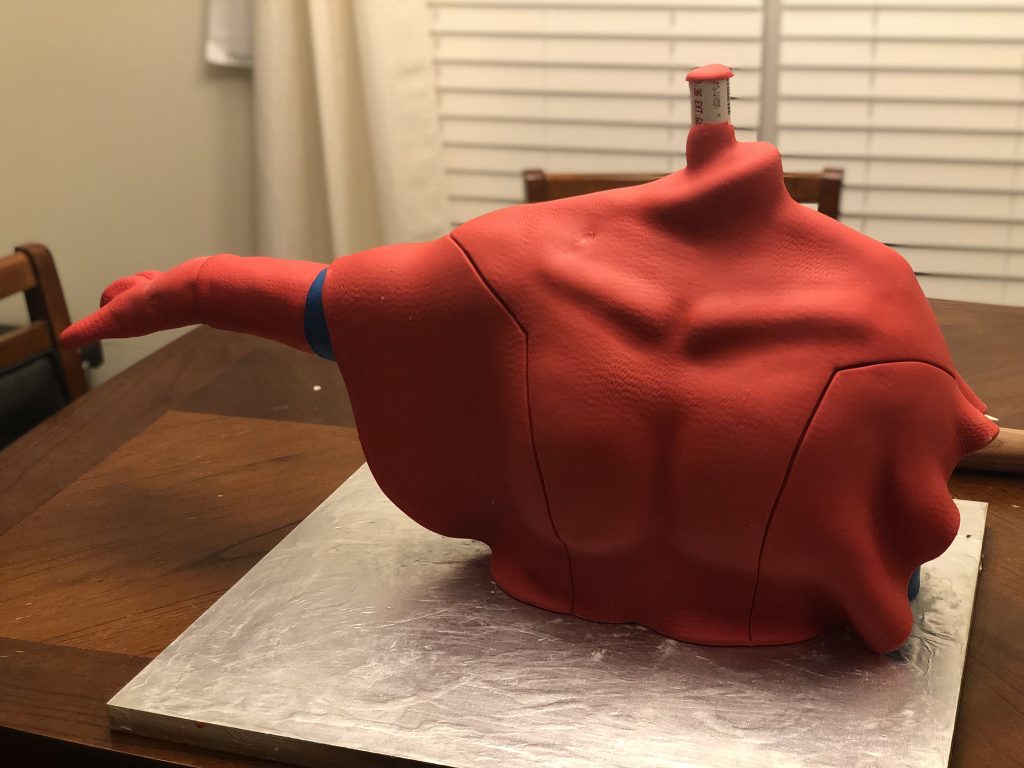
To make it look more realistic, lightly airbrush the cake with black edible airbrush paint.
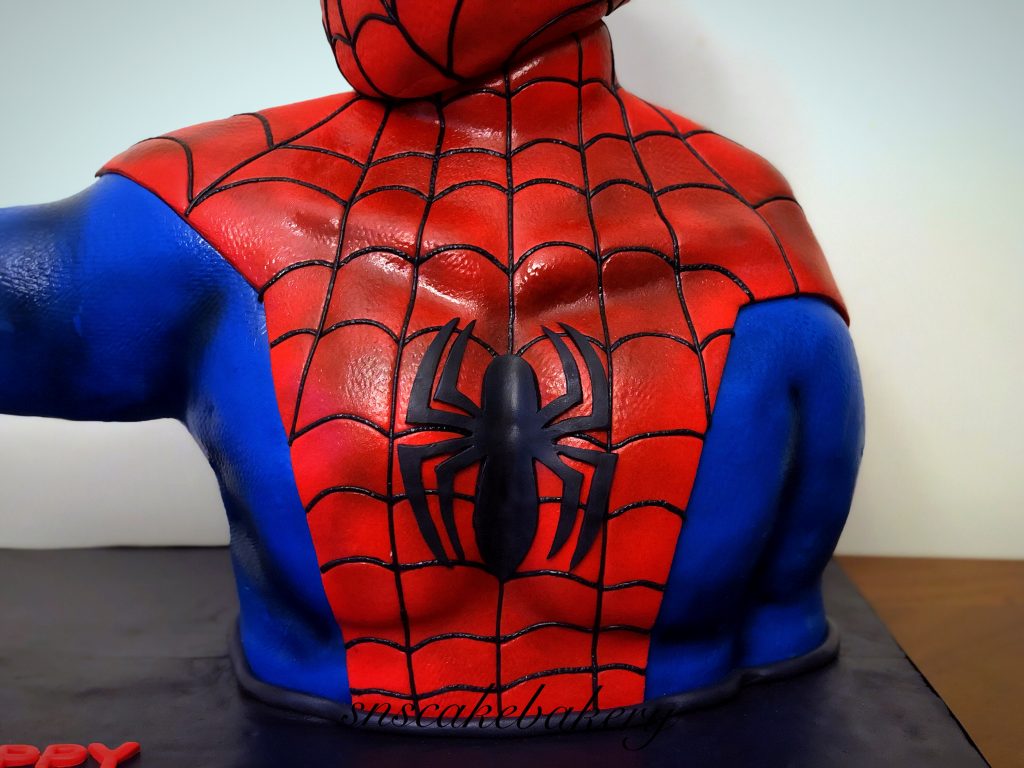
Congratulations, you’ve just created a fantastic 3D Spider-Man Cake!
This cake is a fantastic choice for someone who loves Spider-Man or is a big fan of Marvel Comics. While it might be a bit challenging to make, it will truly showcase your skills as a cake decorator. Most importantly, always remember to have fun with your cakes.

